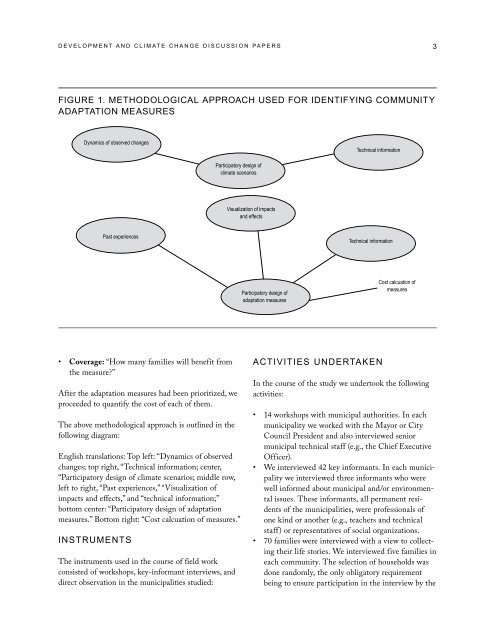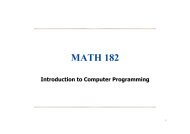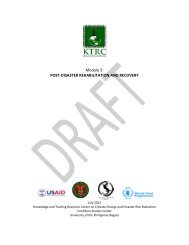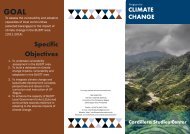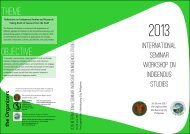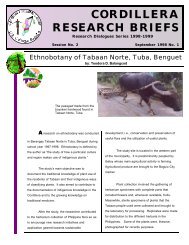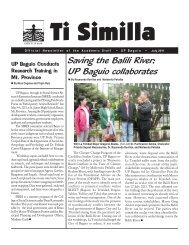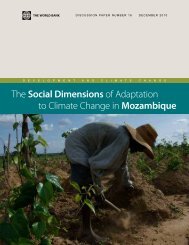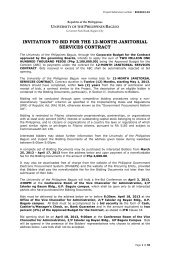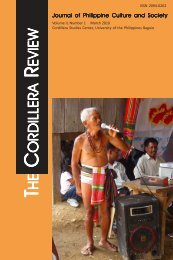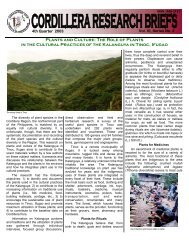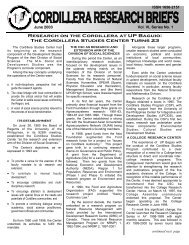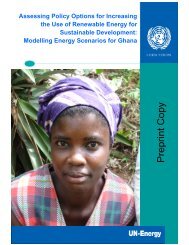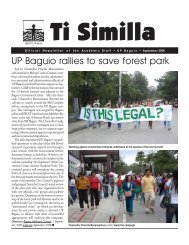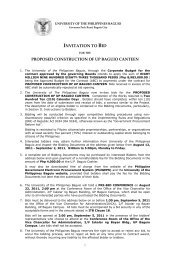EACC Bolivia
EACC Bolivia
EACC Bolivia
You also want an ePaper? Increase the reach of your titles
YUMPU automatically turns print PDFs into web optimized ePapers that Google loves.
d E v E l o p m E n t A n d c l i m A t E c h A n g E d i s c U s s i o n pA p E R s<br />
3<br />
figURE 1. mEthodologicAl AppRoAch UsEd foR idEntifying commUnity<br />
AdAptAtion mEAsUREs<br />
Dynamics of observed changes<br />
Technical information<br />
Participatory design of<br />
climate scenarios<br />
Visualization of impacts<br />
and effects<br />
Past experiences<br />
Technical information<br />
Participatory design of<br />
adaptation measures<br />
Cost calcuation of<br />
measures<br />
• Coverage: “How many families will benefit from<br />
the measure”<br />
After the adaptation measures had been prioritized, we<br />
proceeded to quantify the cost of each of them.<br />
The above methodological approach is outlined in the<br />
following diagram:<br />
English translations: Top left: “Dynamics of observed<br />
changes; top right, “Technical information; center,<br />
“Participatory design of climate scenarios; middle row,<br />
left to right, “Past experiences,” “Visualization of<br />
impacts and effects,” and “technical information;”<br />
bottom center: “Participatory design of adaptation<br />
measures.” Bottom right: “Cost calcuation of measures.”<br />
instRUmEnts<br />
The instruments used in the course of field work<br />
consisted of workshops, key-informant interviews, and<br />
direct observation in the municipalities studied:<br />
ActivitiEs UndERtAKEn<br />
In the course of the study we undertook the following<br />
activities:<br />
• 14 workshops with municipal authorities. In each<br />
municipality we worked with the Mayor or City<br />
Council President and also interviewed senior<br />
municipal technical staff (e.g., the Chief Executive<br />
Officer).<br />
• We interviewed 42 key informants. In each municipality<br />
we interviewed three informants who were<br />
well informed about municipal and/or environmental<br />
issues. These informants, all permanent residents<br />
of the municipalities, were professionals of<br />
one kind or another (e.g., teachers and technical<br />
staff) or representatives of social organizations.<br />
• 70 families were interviewed with a view to collecting<br />
their life stories. We interviewed five families in<br />
each community. The selection of households was<br />
done randomly, the only obligatory requirement<br />
being to ensure participation in the interview by the


